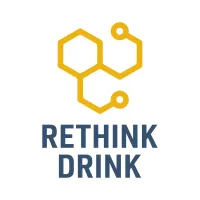
Rethink Drink Blog | Your Quit Lit Fix!
Get your quit lit fix with the Rethink Drink Blog, the go-to source for insights and guidance on overcoming alcohol dependency through The Sinclair Method (TSM); a scientifically-backed approach to alcohol recovery.
Here, we delve deep into the transformative journey of alcohol treatment, offering expert advice, success stories, and the latest research to support you or your loved ones in navigating the path to a healthier relationship with alcohol.
Our mission is to empower individuals with education, effective strategies and compassionate support, demonstrating why TSM is heralded as a groundbreaking solution in the realm of alcohol recovery.
Explore our blogs to discover how you can redefine your relationship with alcohol and embrace a future filled with hope and freedom.
... Have questions? Reach out to us here

Alcohol Units Calculator UK: How to Track Your Drinking Easily
Understanding Alcohol Units in the UK
Recommended Alcohol Limits in the UK
How Many Units Are in Common Drinks?
Why Tracking Alcohol Units Matters
How to Calculate Your Alcohol Intake
1. Use an Online Alcohol Units Calculator
2. Check the Alcohol Units on Bottles and Menus
Key Takeaways:
An alcohol units calculator helps measure your alcohol intake accurately.
The UK recommends a maximum of 14 units per week for low-risk drinking.
Learn how to calculate alcohol units manually and why it matters.
Discover a free online alcohol units calculator for quick and easy tracking.
Understanding Alcohol Units in the UK
Drinking alcohol is common in the UK, but many people don't realise how much they are actually consuming. The UK government uses alcohol units to provide a standardised way of measuring intake, helping people drink responsibly.
What Is an Alcohol Unit?
One alcohol unit is defined as 10 millilitres (or 8 grams) of pure alcohol. However, the number of units in a drink depends on its strength (ABV – Alcohol by Volume) and size.
The formula to calculate alcohol units is:
Alcohol units = (Volume in ml × ABV) ÷ 1000
For example, a pint of 5% beer (568ml) contains:
(568 × 5) ÷ 1000 = 2.84 units
Recommended Alcohol Limits in the UK
The NHS advises both men and women to stick to 14 units per week, spread over at least three days. Drinking all 14 units in one go increases health risks significantly.
How Many Units Are in Common Drinks?
Alcohol units vary depending on the drink's size and strength. Here are some common examples:
Beer, lager, or cider (pint, 4% ABV): 2.3 units
Beer, lager, or cider (pint, 5% ABV): 2.8 units
Wine (175ml glass, 12% ABV): 2.1 units
Wine (250ml glass, 14% ABV): 3.5 units
Spirits (25ml shot, 40% ABV): 1.0 unit
Alcopop (275ml bottle, 4% ABV): 1.1 units
Why Tracking Alcohol Units Matters
Many people underestimate their drinking, leading to increased risks of liver disease, heart problems, and mental health issues. Using a Free alcohol units calculator can help you:
Stay within safe drinking limits.
Understand the impact of different drinks.
Make informed decisions about your alcohol intake.
How to Calculate Your Alcohol Intake
There are three easy ways to track your alcohol consumption:
1. Use an Online Alcohol Units Calculator
For the fastest and most accurate way to check your alcohol consumption, try our free Alcohol Units Calculator UK. Simply input your drink type, size, and ABV to get instant results.
2. Check the Alcohol Units on Bottles and Menus
Many alcoholic drinks display their units on packaging or menus. This makes it easier to track your intake without needing to calculate manually.
3. Keep a Drinking Diary
Write down what you drink each day to identify patterns and reduce excess consumption. This is particularly useful if you’re cutting down or following a method like The Sinclair Method.
Cutting Down on Alcohol? Here’s How
If you're looking to drink less, here are some effective strategies:
Set a weekly limit – Stick to the 14-unit guideline.
Swap to lower ABV drinks – Choose weaker beers, wines, or non-alcoholic options.
Have alcohol-free days – Give your body a break by skipping alcohol on certain days.
Measure your drinks – Avoid overpouring spirits by using a measuring cup.
Seek support – If you're struggling, consider coaching and support, like Rethink Drink.
Final Thoughts
Understanding alcohol units is crucial for managing your drinking habits and staying within safe limits. By using an alcohol units calculator, you can quickly check how much you're consuming and make healthier choices.


